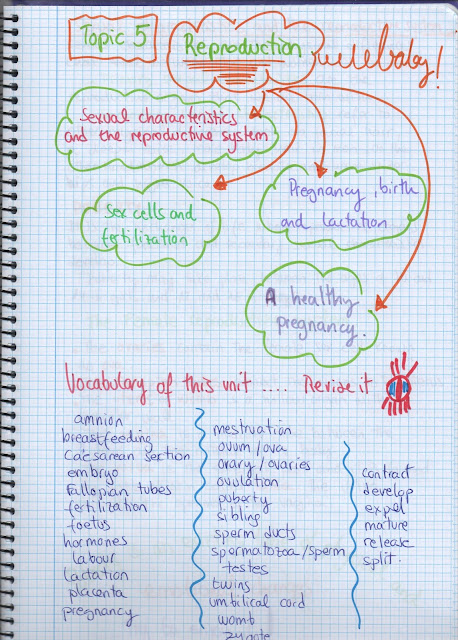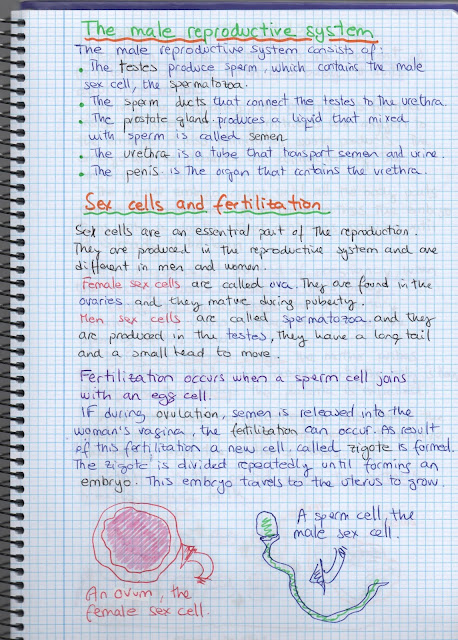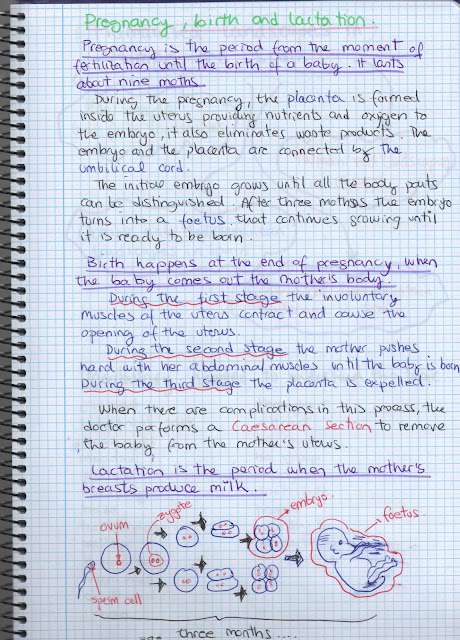VOCABULARY
Puberty
SEXUAL CHARACTERISTICS AND THE REPRODUCTIVE SYSTEM
Sexual characteristics are the physical differences that exist between men and women. Sexual characteristics are classified into:
- Primary sexual characteristics: these are the reproductive organs, also known as the genital organs. We are born with these characteristics.
- Secondary sexual characteristics: these refer to other physical differences between men and women. For example, men have facial hair, a deeper voice, more body hair and more developed muscles. Women develop breasts and have wider hips, a higher voice and less body hair.
PUBERTY
Puberty is the stage of life when reproductive organs become functional and secondary sexual characteristics develop. Puberty takes place between the ages of 10 and 14 in girls, and 12 to 16 in boys.
THE FEMALE REPRODUCTIVE SYSTEM
- The ovaries contain the female sex cells, known as egg cells or ova.
- The Fallopian tubes connect the ovaries to the uterus.
- The uterus or womb is a hollow organ with a muscular wall. The baby develops here during pregnancy.
- The vagina is a muscular tube between the uterus and the outside of the body.
- The vulva is the external part of the female reproductive system. It is formed by folds of skin called labia. The vulva protects the opening of the vagina. It also protects the opening of the urethra through which urine is expelled.
THE MALE REPRODUCTIVE SYSTEM
- The testicles produce sperm, which contains the male sex cells, known as sperm cells or spermatozoa.
- The sperm ducts are fine tubes that connect the testes to the urethra.
- The prostate gland produces liquids which help to transport spermatozoa and provide them with nutrients. The mixture of these liquids and sperm is called semen.
- The urethra is a tube that transports semen to the outside of the body. The urethra also expels urine.
- The penis is the organ that contains the urethra.
SEX CELLS AND FERTILIZATION
Sex cells are an essential part of reproduction. They are produced in the reproductive system and are different in men and women.
- Female sex cells are called ova. They are found in the ovaries.
- Male sex cells are called spermatozoa. They are produced in the testes. They have an small head and a big tail.
Fertilization occurs when a sperm cell joins with an egg cell. During sexual intercourse, semen is released into the woman’s vagina. The spermatozoa travel through her uterus into the Fallopian tubes. If, at the same time, ovulation takes place and an egg cell is released from one of the ovaries into the adjacent Fallopian tube, fertilization can occur.
As a result of fertilization, a new cell, called a zygote, is formed. The zygote divides repeatedly into more cells, and all these new cells form an embryo. The embryo travels through the Fallopian tube to the uterus, where it attaches itself to the wall and continues to grow.

PREGNANCY
Pregnancy is the period from the moment of fertilization until the birth of a baby. It lasts about nine months.
- Once the embryo attaches itself to the uterus, two main changes occur:
- The embryo is surrounded by a sac called the amnion, which is filled with liquid and provides protection.
- A new organ, called the placenta, forms inside the uterus. It provides nutrients and oxygen from the mother to the embryo. It also eliminates waste products produced by the embryo. The embryo and the placenta are connected by the umbilical cord.
- The initial embryo develops into a foetus, and at about three months, all the body parts can be distinguished. The foetus continues to develop and grow until it is ready to be born.
BIRTH
Birth happens at the end of pregnancy, when the baby comes out of the mother’s body develop and grow until it is ready to be born.
LACTATION
Lactation is the period when the mother’s breasts produce milk. It happens after giving birth.
HERE YOU HAVE THE SCHEMES YOU NEED TO COPY IN YOUR NOTEBOOK.






No hay comentarios:
Publicar un comentario